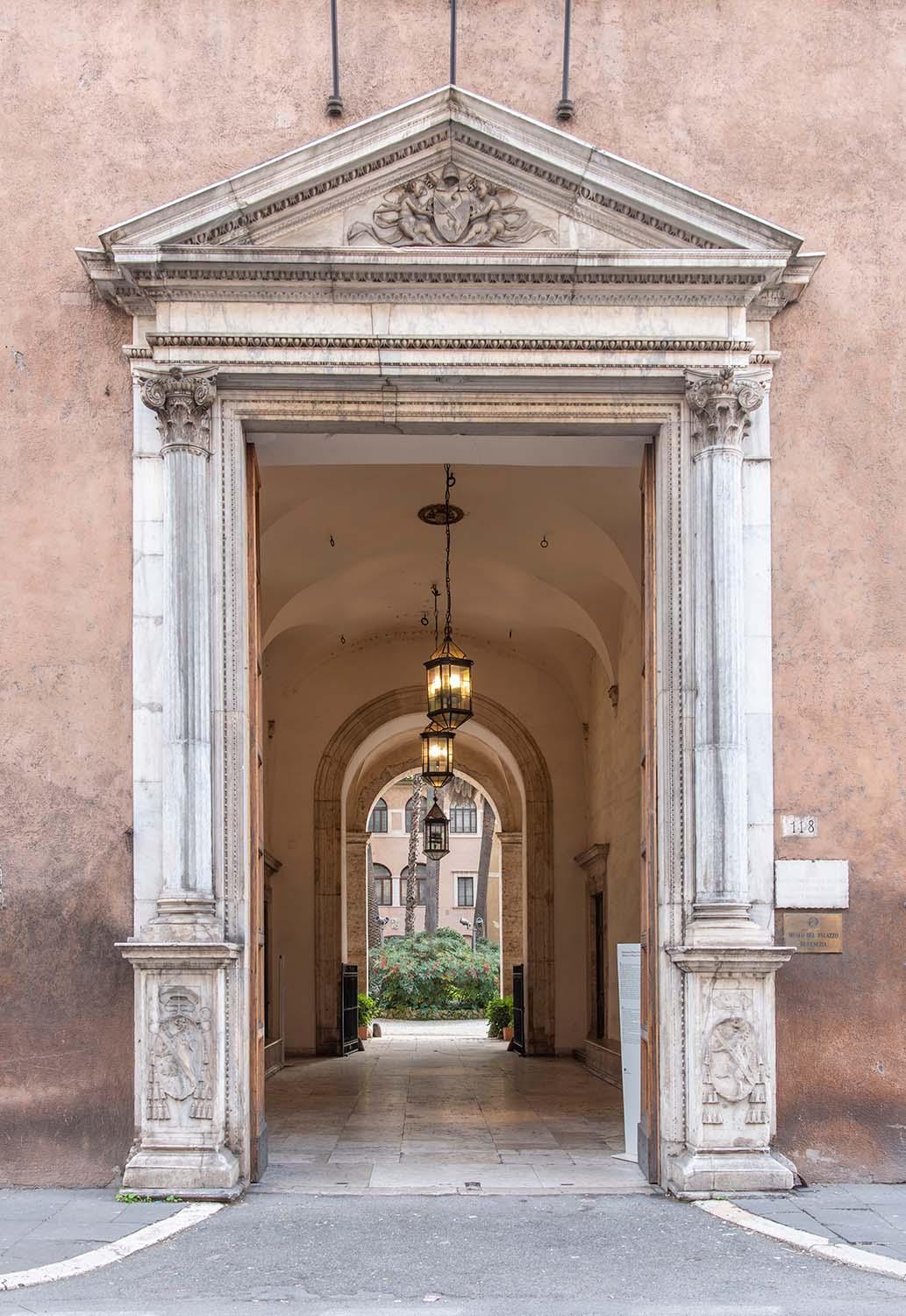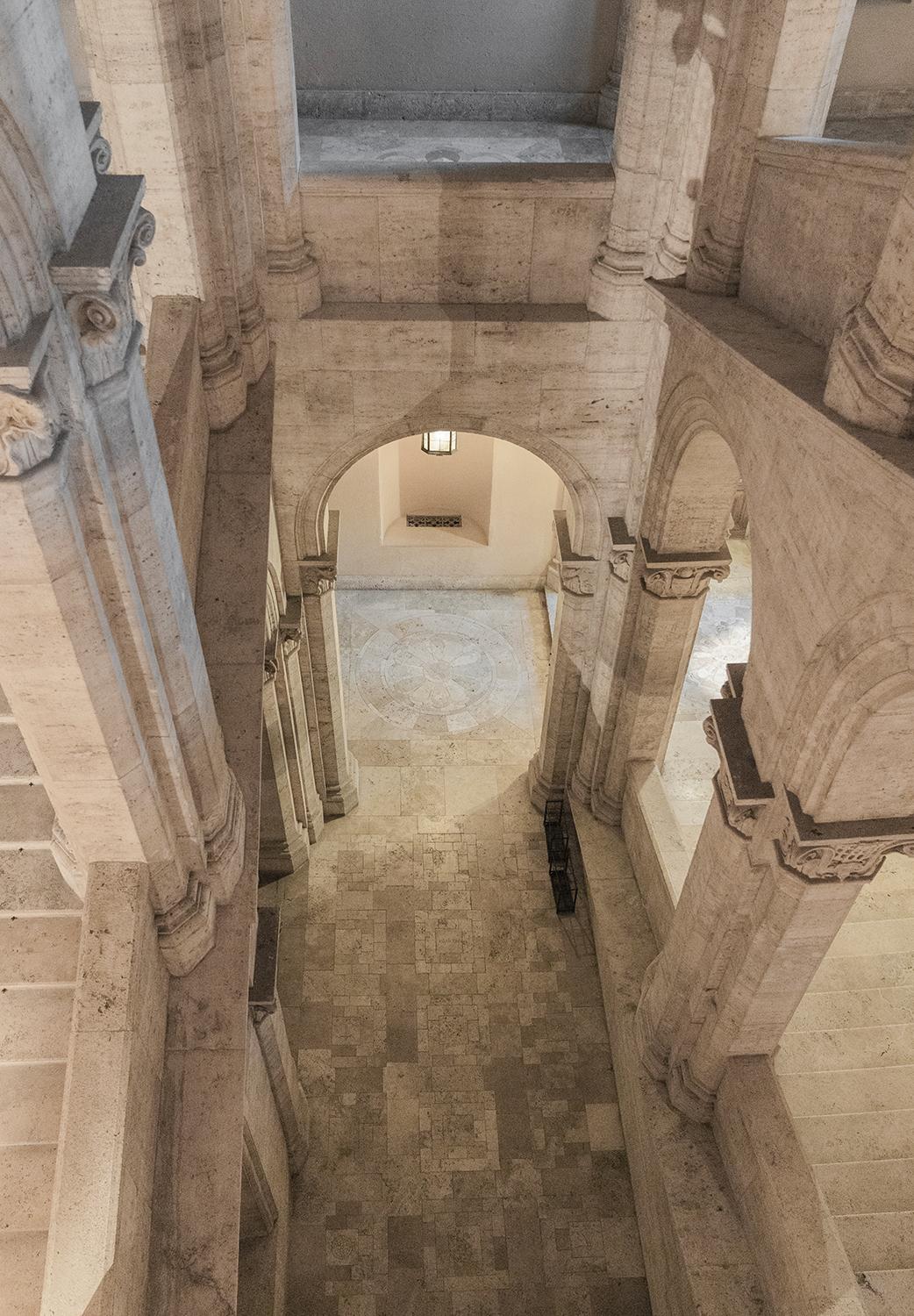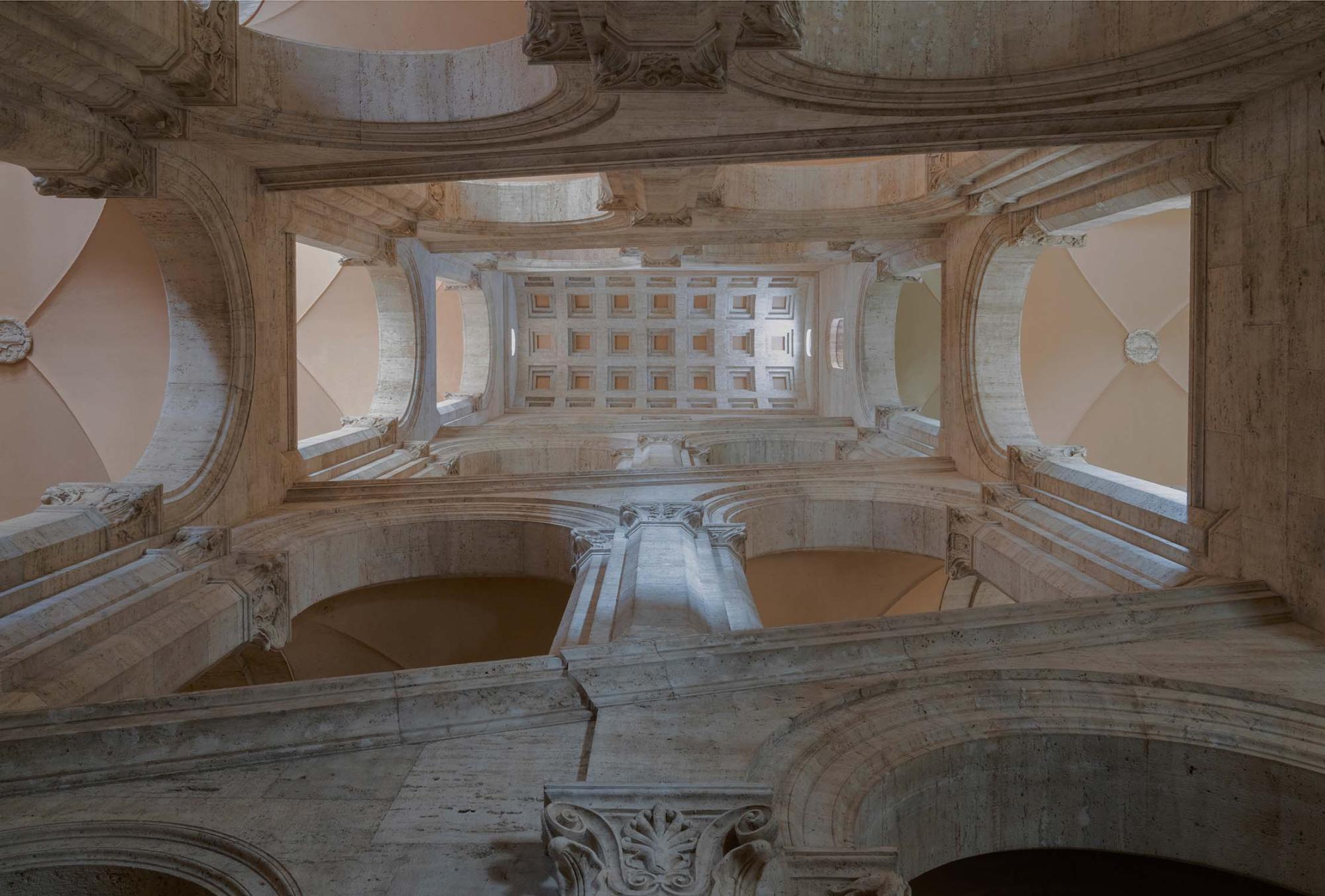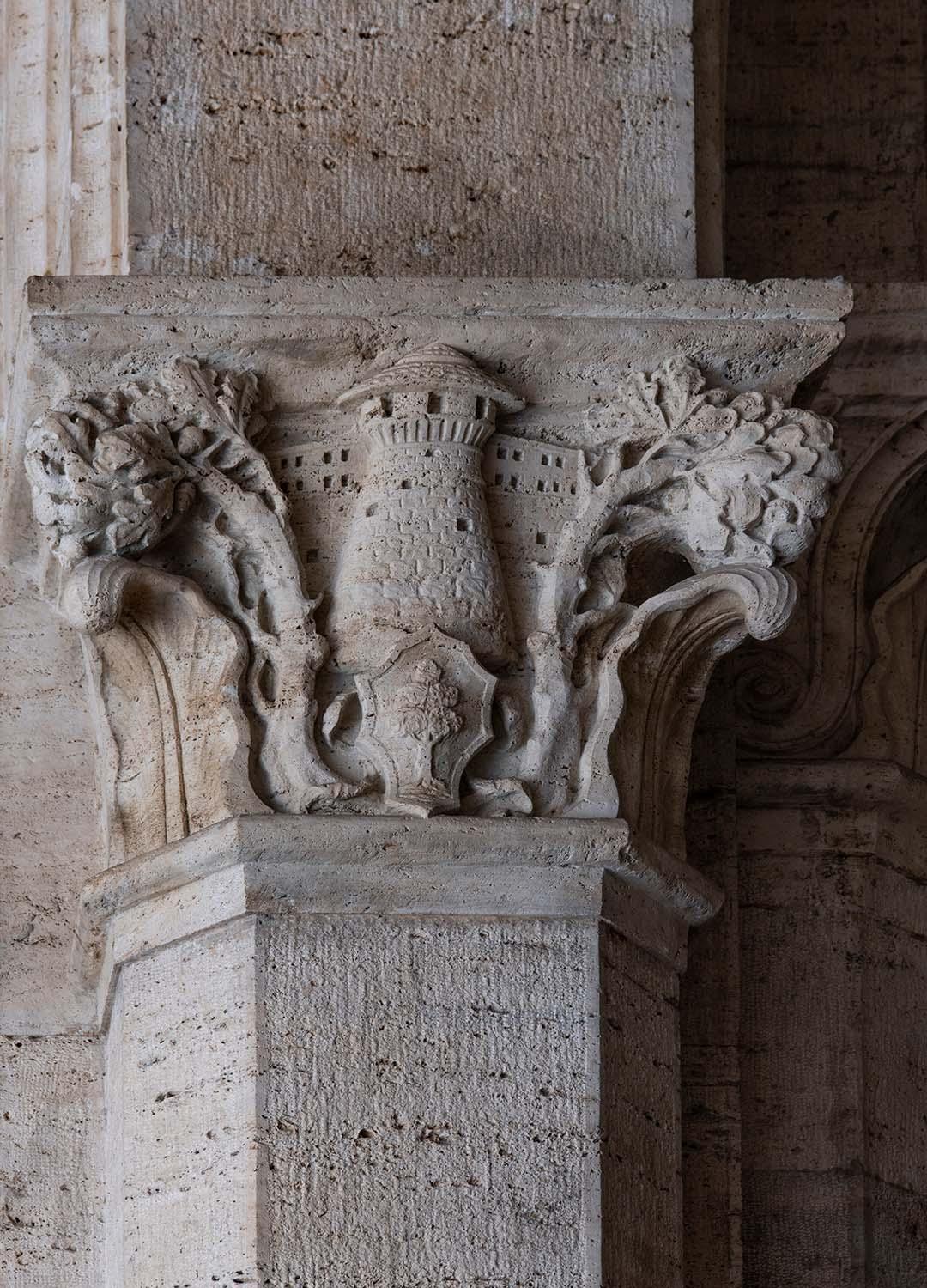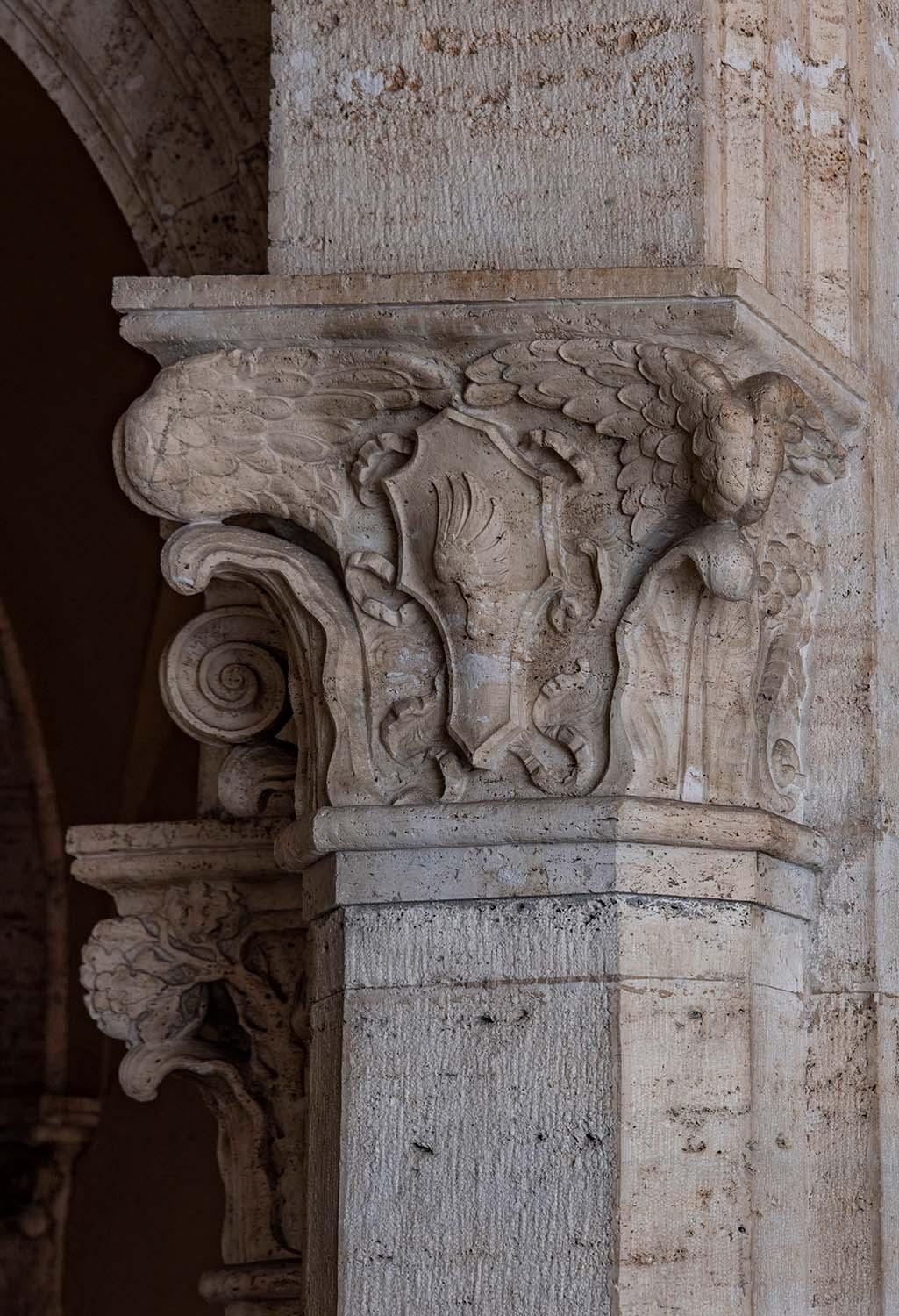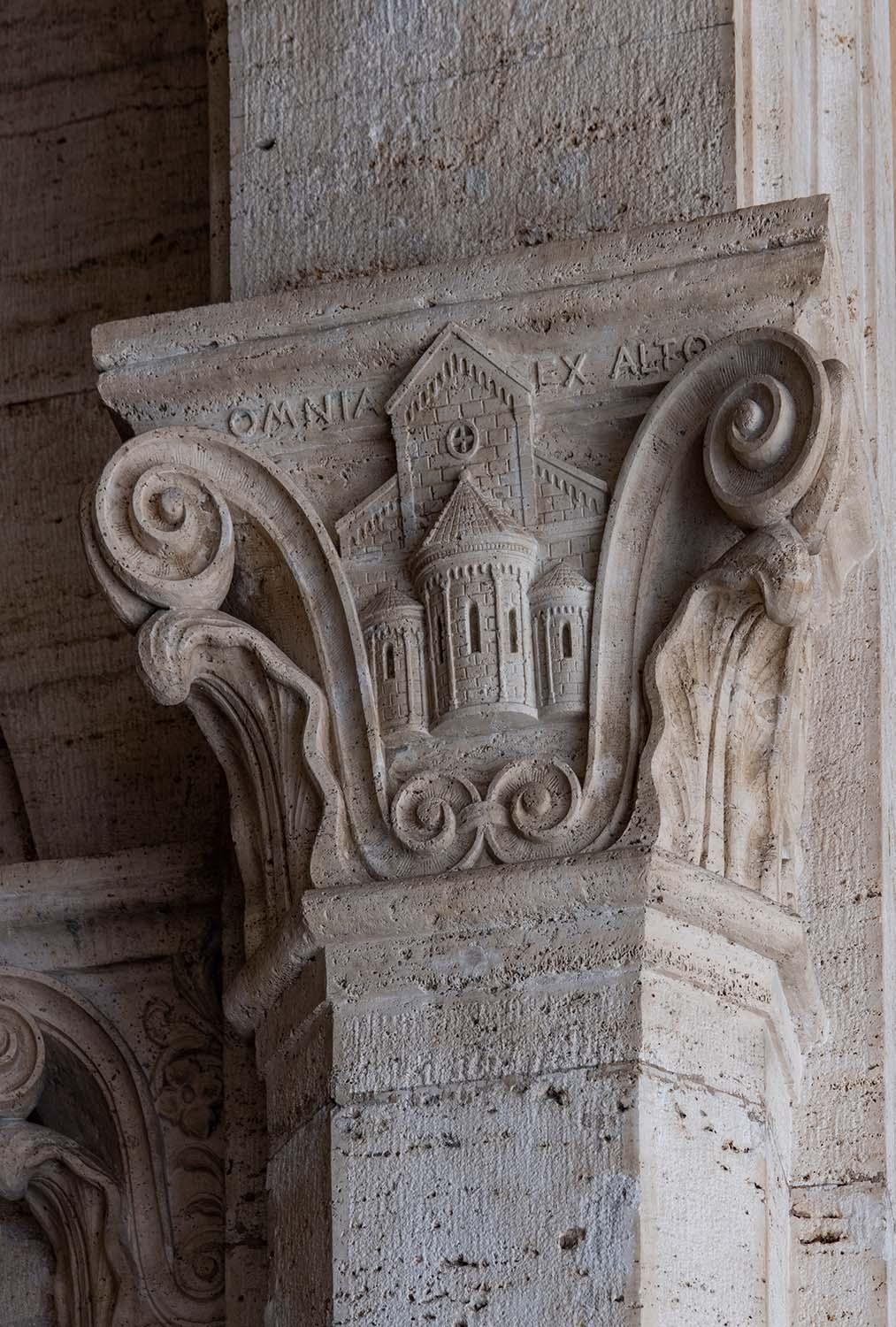Staircase of Honour
Designed in the 1920s, this grand staircase evokes the great Italian Renaissance through its material and style
Open to via del Plebiscito, the staircase dates back to the 1920s. Naturally, Palazzo Venezia already previously had several ways to access the upper floors, as well as a number of grand routes leading to the piano nobile, the most important floor.
In addition to the one that still exists on Piazza Venezia, in this specific area of the complex, the documents attest to three staircases over the centuries: a late fifteenth-century “cordonata” (sloping ramp-like staircase), which, among other things, made it possible to ascend to the first floor on horseback; an eighteenth-century staircase; and another designed by Camillo Pistrucci (1856-1927) in 1911, i.e., at the end of the Austro-Hungarian period.
The grand staircase, otherwise known as the Scala Nova, was built between 1924 and 1930, based on a design by Luigi Marangoni (1872-1950). The project for the sculptural decoration is also attributed to Marangoni, later sculpted by Benedetto D’Amore (1882-1960), a sculptor who also worked on the Vittoriano.
Marangoni and D’Amore were inspired by the visual language of the fifteenth-century phase of the building, which was dominated by the Pope Paul II (1464-1471) and his nephew, Cardinal Marco Barbo (1420-1491): indeed, even today, at first glance, most people consider the staircase to be an original from the Renaissance. But looking more closely at the travertine structure and the sculptural decoration, it is easy to see that this is a modern reproduction. The capitals celebrate the victories won by the Kingdom of Italy against Austria during the Third War of Independence in 1866 and the First World War (1915-1918).

